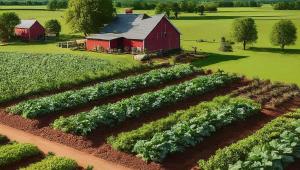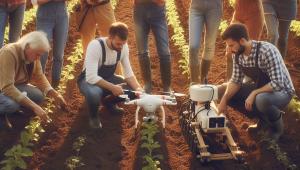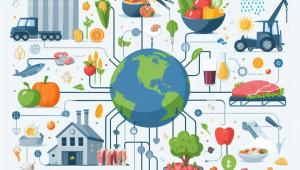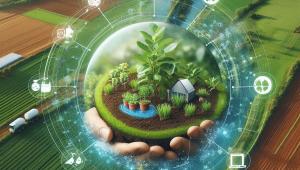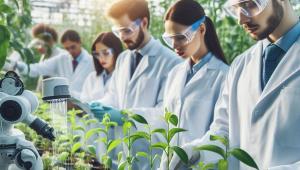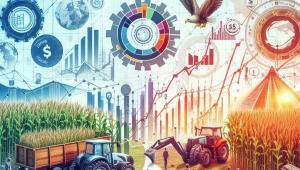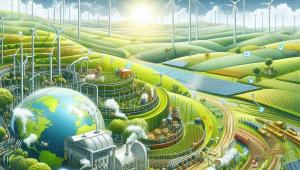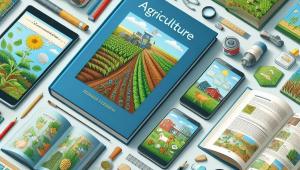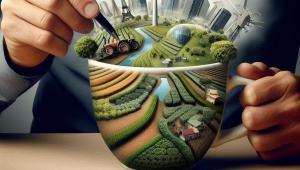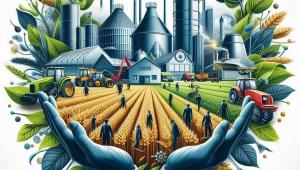Animal husbandry, also known as animal agriculture, is the practice of breeding, raising, and caring for livestock animals to produce various products such as meat, dairy, eggs, wool, and leather. It is a crucial component of the global food system, providing essential nutrients and livelihoods for billions of people worldwide. However, animal husbandry also has significant impacts on the environment, animal welfare, and public health, making it a complex and often controversial field.
Principles of Animal Husbandry
Animal Welfare
Animal welfare is a critical consideration in animal husbandry, referring to the physical and mental well-being of animals. The "Five Freedoms" of animal welfare, developed by the UK Farm Animal Welfare Council, provide a framework for assessing and ensuring the welfare of livestock:
- Freedom from hunger and thirst
- Freedom from discomfort
- Freedom from pain, injury, or disease
- Freedom to express normal behavior
- Freedom from fear and distress
Ensuring animal welfare involves providing appropriate housing, nutrition, healthcare, and handling practices that meet the specific needs of each species and production system.
Genetics and Breeding
Genetics and breeding play a crucial role in animal husbandry, as they determine the productivity, efficiency, and quality of livestock products. Selective breeding has been used for centuries to improve the desirable traits of livestock, such as growth rate, feed conversion efficiency, and disease resistance.
In recent years, advances in genomic technologies have revolutionized animal breeding, allowing for more precise and rapid genetic improvement. Genomic selection, which uses genetic markers to predict the breeding value of animals, has become a powerful tool for accelerating genetic progress and improving the efficiency and sustainability of livestock production.
Nutrition and Feeding
Proper nutrition is essential for the health, welfare, and productivity of livestock animals. The nutritional requirements of livestock vary depending on the species, age, sex, and production stage, and must be carefully balanced to ensure optimal growth and performance.
Livestock diets typically consist of a combination of forages (such as grass or hay), grains (such as corn or soybeans), and various supplements (such as vitamins and minerals). The choice of feed ingredients and feeding strategies can have significant impacts on animal health, product quality, and environmental sustainability.
Health and Disease Management
Maintaining health and preventing the spread of diseases is critical for the welfare and productivity of livestock animals. This involves implementing various biosecurity measures, such as quarantine, vaccination, and hygiene practices, to prevent the introduction and spread of pathogens.
In addition, regular monitoring and early detection of diseases through diagnostic testing and surveillance are essential for effective disease control. When diseases do occur, appropriate treatment and control measures, such as antibiotics and culling, may be necessary to minimize the impact on animal health and welfare.
Livestock Production Systems
Beef Cattle Production
Beef cattle production involves the raising of cattle for meat production. There are various production systems used in beef cattle production, ranging from extensive grazing systems to intensive feedlot systems.
In extensive grazing systems, cattle are raised on pastures or rangelands, where they feed on grasses and other forages. This system is typically less intensive and more environmentally sustainable but may result in slower growth rates and lower meat yields.
In intensive feedlot systems, cattle are confined in feedlots and fed high-energy diets consisting mostly of grains. This system allows for faster growth rates and higher meat yields but may have negative impacts on animal welfare and the environment.
Dairy Cattle Production
Dairy cattle production involves the raising of cattle for milk production. Like beef cattle production, there are various production systems used in dairy cattle production, ranging from pasture-based systems to confined systems.
In pasture-based systems, dairy cows are raised on pastures and fed a diet consisting mostly of grasses and other forages. This system is typically more environmentally sustainable and allows for more natural behaviors, but may result in lower milk yields.
In confined systems, dairy cows are housed indoors and fed a high-energy diet consisting mostly of grains and silage. This system allows for higher milk yields and more efficient production but may have negative impacts on animal welfare and the environment.
Poultry Production
Poultry production involves the raising of chickens, turkeys, and other birds for meat and egg production. There are various production systems used in poultry production, ranging from free-range systems to intensive confined systems.
In free-range systems, poultry are allowed access to the outdoors and are typically fed a diet consisting of grains and forages. This system allows for more natural behaviors and may result in higher-quality products, but may have lower efficiency and higher costs.
In intensive confined systems, poultry are housed indoors in cages or on the floor and fed a high-energy diet consisting mostly of grains. This system allows for higher efficiency and lower costs but may have negative impacts on animal welfare and the environment.
Swine Production
Swine production involves the raising of pigs for meat production. There are various production systems used in swine production, ranging from outdoor systems to intensive indoor systems.
In outdoor systems, pigs are raised in pastures or paddocks and fed a diet consisting of grains and forages. This system allows for more natural behaviors and may result in higher-quality products, but may have lower efficiency and higher costs.
In intensive indoor systems, pigs are housed in confined facilities and fed a high-energy diet consisting mostly of grains. This system allows for higher efficiency and lower costs but may have negative impacts on animal welfare and the environment.
Animal Husbandry Technologies
Precision Livestock Farming
Precision livestock farming (PLF) involves the use of advanced technologies, such as sensors, cameras, and data analytics, to monitor and manage the health, welfare, and productivity of livestock animals. PLF technologies can be used to track various parameters, such as animal behavior, feed intake, and environmental conditions, and provide real-time data and alerts to farmers.
For example, wearable sensors can be used to monitor the activity, temperature, and health status of individual animals, allowing for early detection and treatment of diseases. Automated feeding systems can be used to optimize feed delivery and minimize waste, while robotic milking systems can improve the efficiency and consistency of milk production.
PLF technologies can help to improve the efficiency, sustainability, and animal welfare of livestock production, but also raise concerns about data privacy, cybersecurity, and the cost and complexity of implementation.
Genetic Engineering
Genetic engineering involves the use of biotechnology to modify the genetic makeup of livestock animals for improved productivity, efficiency, or other desired traits. This can be done through various techniques, such as transgenesis (introducing foreign genes into the animal's genome), gene editing (modifying existing genes), or cloning (creating genetically identical copies of an animal).
Some examples of genetically engineered livestock include:
- Pigs with increased resistance to diseases such as porcine reproductive and respiratory syndrome (PRRS)
- Cattle with increased muscle mass and reduced fat content for improved meat quality
- Goats that produce human milk proteins for use in infant formula
While genetic engineering has the potential to improve the efficiency and sustainability of livestock production, it also raises ethical and safety concerns, such as the welfare of the animals, the long-term effects on the environment and human health, and the social and economic impacts on small-scale farmers.
Artificial Insemination and Embryo Transfer
Artificial insemination (AI) and embryo transfer (ET) are reproductive technologies that are widely used in animal husbandry to improve the efficiency and genetic quality of livestock breeding. AI involves the collection of semen from a male animal and its insertion into the reproductive tract of a female animal, while ET involves the collection of embryos from a donor female and their transfer into the uterus of a recipient female.
AI and ET allow for the rapid dissemination of desirable genetic traits, such as high milk yield or disease resistance, across a large number of animals. They also enable the use of superior genetics from a small number of elite animals, reducing the need for large breeding populations and associated costs.
However, AI and ET also have some limitations and challenges, such as the need for skilled technicians, the risk of disease transmission, and the potential for inbreeding and reduced genetic diversity.
Veterinary Pharmaceuticals
Veterinary pharmaceuticals, such as antibiotics, vaccines, and growth promoters, are widely used in animal husbandry to prevent and treat diseases, improve animal health and welfare, and increase productivity. However, the use of veterinary pharmaceuticals also raises concerns about the development of antibiotic resistance, the presence of drug residues in animal products, and the environmental impacts of pharmaceutical waste.
To address these concerns, there is a growing emphasis on the responsible and judicious use of veterinary pharmaceuticals, as well as the development of alternative approaches, such as probiotics, prebiotics, and phytogenics, that can promote animal health and productivity without the use of antibiotics.
In addition, there is increasing research on the use of precision medicine approaches, such as pharmacogenomics and personalized medicine, that can optimize the use of veterinary pharmaceuticals based on the specific genetic and physiological characteristics of individual animals.
Environmental Impacts of Animal Husbandry
Greenhouse Gas Emissions
Animal husbandry is a significant contributor to greenhouse gas emissions, primarily through the production of methane (from enteric fermentation in ruminants) and nitrous oxide (from manure management and feed production). According to the Food and Agriculture Organization (FAO), the livestock sector is responsible for 14.5% of global anthropogenic greenhouse gas emissions.
Strategies for reducing greenhouse gas emissions from animal husbandry include:
- Improving feed efficiency and reducing enteric methane production through nutrition and genetics
- Implementing manure management practices that reduce methane and nitrous oxide emissions, such as anaerobic digestion and composting
- Adopting grazing and pasture management practices that sequester carbon in soils and vegetation
Land Use and Deforestation
Animal husbandry is a major driver of land use change and deforestation, particularly in developing countries where the demand for animal products is growing rapidly. The expansion of pastures and feed crop production often involves the conversion of forests, grasslands, and other natural habitats, leading to biodiversity loss, soil degradation, and carbon emissions.
Strategies for reducing the land use impacts of animal husbandry include:
- Improving the productivity and efficiency of livestock production through genetics, nutrition, and management practices
- Promoting the use of marginal and degraded lands for livestock production, rather than converting natural habitats
- Adopting silvopastoral systems that integrate livestock with trees and other perennial vegetation, providing multiple ecosystem services
Water Use and Pollution
Animal husbandry is a significant user and polluter of water resources, through the consumption of water for animal drinking, feed production, and processing, as well as the discharge of animal waste and other pollutants into water bodies.
Strategies for reducing the water impacts of animal husbandry include:
- Improving water use efficiency through precision irrigation, water recycling, and other technologies
- Implementing nutrient management practices that reduce the runoff and leaching of animal waste into water bodies
- Adopting waste treatment technologies, such as anaerobic digestion and constructed wetlands, that can recover nutrients and energy from animal waste
Biodiversity Impacts
Animal husbandry can have significant negative impacts on biodiversity, through the conversion of natural habitats, the introduction of invasive species, and the transmission of diseases to wildlife populations.
Strategies for reducing the biodiversity impacts of animal husbandry include:
- Promoting the use of native and adapted livestock breeds that are well-suited to local environments and production systems
- Implementing biosecurity measures that prevent the introduction and spread of diseases between livestock and wildlife populations
- Adopting agroecological practices that enhance biodiversity and ecosystem services, such as agroforestry, crop rotation, and integrated pest management
Animal Welfare Concerns
Housing and Confinement
The housing and confinement of livestock animals is a major animal welfare concern, particularly in intensive production systems where animals are kept in crowded and restrictive conditions. Inadequate space, lack of environmental enrichment, and limited ability to express natural behaviors can lead to stress, frustration, and abnormal behaviors in animals.
Strategies for improving the housing and confinement of livestock include:
- Providing sufficient space and environmental complexity to allow for natural behaviors and social interactions
- Implementing alternative housing systems, such as free-range, pasture-based, or group housing, that provide more freedom and naturalness for animals
- Adopting animal welfare certification programs, such as the Global Animal Partnership or the RSPCA Assured, that set standards for housing and management practices
Painful Procedures
Many routine procedures in animal husbandry, such as castration, dehorning, and tail docking, involve the infliction of pain and distress on animals. These procedures are often performed without anesthesia or analgesia and can cause acute and chronic pain, as well as behavioral and physiological changes in animals.
Strategies for reducing the use of painful procedures in animal husbandry include:
- Implementing alternatives to painful procedures, such as the use of polled genetics to eliminate the need for dehorning
- Providing pain relief and anesthesia during necessary procedures, such as the use of local anesthetics for castration
- Adopting animal welfare policies and practices that prioritize the minimization of pain and distress in animals
Transport and Slaughter
The transport and slaughter of livestock animals are critical stages in the animal production process that can have significant impacts on animal welfare. Long-distance transport, overcrowding, extreme temperatures, and rough handling can cause stress, injury, and mortality in animals, while improper stunning and slaughter techniques can result in pain and suffering.
Strategies for improving the welfare of animals during transport and slaughter include:
- Implementing animal welfare standards and guidelines for transport and slaughter, such as the OIE standards and the EU regulations
- Providing appropriate training and equipment for animal handlers and slaughterhouse personnel to ensure humane handling and stunning
- Adopting stunning and slaughter methods that minimize pain and distress, such as controlled atmosphere stunning for poultry and captive bolt stunning for mammals
Behavioral Needs
Meeting the behavioral needs of livestock animals is essential for ensuring their welfare and preventing the development of abnormal behaviors. Different species have different behavioral needs, such as foraging, exploration, social interaction, and rest, that must be provided for in the animal's environment.
Strategies for meeting the behavioral needs of livestock include:
- Providing appropriate environmental enrichment, such as toys, substrates, and social companions, that stimulate natural behaviors and reduce boredom and frustration
- Designing housing and management systems that allow for the expression of natural behaviors, such as perching for poultry and wallowing for pigs
- Implementing animal welfare assessment protocols that evaluate the behavioral indicators of animal welfare, such as play, exploration, and social interaction
Public Health Implications
Zoonotic Diseases
Zoonotic diseases are infectious diseases that can be transmitted between animals and humans and are a major public health concern associated with animal husbandry. Some examples of zoonotic diseases include avian influenza, salmonellosis, and E. coli infections, which can cause serious illness and death in humans.
Strategies for reducing the risk of zoonotic diseases in animal husbandry include:
- Implementing biosecurity measures, such as quarantine, vaccination, and hygiene practices, to prevent the introduction and spread of pathogens
- Conducting surveillance and monitoring programs to detect and respond to zoonotic disease outbreaks
- Promoting the responsible use of antibiotics in animal agriculture to reduce the development and spread of antibiotic-resistant pathogens
Foodborne Illnesses
Foodborne illnesses are another major public health concern associated with animal husbandry, caused by the consumption of animal products contaminated with pathogens such as Salmonella, Campylobacter, and Listeria. These illnesses can cause severe symptoms, such as diarrhea, fever, and vomiting, and can be particularly dangerous for vulnerable populations such as children, the elderly, and the immunocompromised.
Strategies for reducing the risk of foodborne illnesses in animal husbandry include:
- Implementing food safety management systems, such as Hazard Analysis and Critical Control Points (HACCP), that identify and control potential hazards in the food production process
- Conducting microbial testing and monitoring programs to detect and respond to foodborne pathogen contamination
- Promoting consumer education and safe food handling practices to reduce the risk of foodborne illness in the home
Antibiotic Resistance
The use of antibiotics in animal husbandry is a major contributor to the development and spread of antibiotic-resistant bacteria, which pose a serious threat to public health. Antibiotic-resistant infections are more difficult and expensive to treat and can lead to increased morbidity and mortality in humans.
Strategies for reducing the risk of antibiotic resistance in animal husbandry include:
- Implementing judicious use policies and practices that limit the use of antibiotics to necessary therapeutic purposes only
- Promoting the use of alternative disease prevention and control strategies, such as vaccination, biosecurity, and improved husbandry practices
- Conducting research and development of new antibiotics and alternative therapies that can effectively treat resistant infections
Occupational Health and Safety
Animal husbandry can also pose occupational health and safety risks to workers, such as exposure to zoonotic diseases, physical hazards, and psychological stressors. These risks can be particularly high in intensive animal production systems, where workers may be exposed to high levels of dust, noise, and ammonia, as well as to unpredictable and dangerous animal behaviors.
Strategies for improving occupational health and safety in animal husbandry include:
- Providing appropriate training, equipment, and facilities for workers to minimize exposure to hazards and risks
- Implementing occupational health and safety management systems, such as the ISO 45001 standard, that identify and control workplace hazards
- Conducting regular health monitoring and surveillance programs to detect and respond to occupational health issues in workers
Socio-Economic Aspects
Economic Importance
Animal husbandry is a major contributor to the global economy, providing livelihoods and income for millions of people worldwide. According to the FAO, the livestock sector contributes about 40% of global agricultural gross domestic product (GDP) and supports the livelihoods of about 1.3 billion people.
The economic importance of animal husbandry varies across different regions and production systems, with some countries and communities being highly dependent on livestock for their economic and social well-being. For example, in many developing countries, livestock is a critical source of income, nutrition, and social status for smallholder farmers and pastoralists.
Social and Cultural Significance
Animal husbandry also has significant social and cultural importance in many societies around the world. Livestock animals are often deeply embedded in the cultural practices, beliefs, and identities of different communities, and play important roles in religious rituals, social events, and traditional knowledge systems.
For example, in many pastoral societies, livestock are a symbol of wealth, status, and social prestige, and are used in various cultural practices such as dowries, gifts, and sacrifices. In other societies, livestock are revered as sacred animals or are associated with particular deities or spiritual beliefs.
Gender Roles and Equity
Animal husbandry also has important gender dimensions, with women often playing critical roles in livestock production and management, particularly in smallholder and pastoral systems. Women are often responsible for tasks such as feeding, milking, and processing animal products, as well as for the care and management of small ruminants and poultry.
However, women often face significant barriers and inequities in access to resources, services, and decision-making in animal husbandry, which can limit their productivity and well-being.
Strategies for promoting gender equity in animal husbandry include:
- Providing gender-responsive training, extension, and financial services that meet the specific needs and priorities of women
- Promoting women's participation and leadership in livestock organizations, cooperatives, and decision-making bodies
- Conducting gender analysis and impact assessments to identify and address gender-based constraints and opportunities in animal husbandry policies and programs
Youth Engagement
Engaging youth in animal husbandry is critical for ensuring the sustainability and resilience of the livestock sector, particularly in the face of an aging farming population and rural-urban migration. Youth can bring new skills, innovations, and entrepreneurship to animal husbandry, and can help to promote sustainable and ethical practices in the sector.
Strategies for engaging youth in animal husbandry include:
- Providing education and training programs that equip youth with the knowledge and skills needed for successful livestock production and management
- Creating opportunities for youth entrepreneurship and business development in the livestock sector, such as through incubators, accelerators, and mentorship programs
- Promoting the use of digital technologies and social media to attract and engage youth in animal husbandry and related fields
Conclusion
Animal husbandry is a complex and multifaceted field that plays a vital role in the global food system, economy, and society. It involves the breeding, raising, and care of a wide range of livestock species for various purposes, such as meat, dairy, eggs, fiber, and draft power. Animal husbandry practices have evolved, shaped by factors such as advances in science and technology, changing consumer demands and preferences, and growing concerns about environmental sustainability, animal welfare, and public health.
As we have seen throughout this comprehensive guide, animal husbandry presents both opportunities and challenges for sustainable development. On one hand, livestock production can provide essential nutrients, income, and livelihoods for billions of people worldwide, particularly in developing countries where animal agriculture is a major driver of economic growth and poverty reduction. Livestock can also play important roles in supporting biodiversity, nutrient cycling, and other ecosystem services when managed appropriately.
On the other hand, animal husbandry can also have significant negative impacts on the environment, animal welfare, and public health, if not managed responsibly and sustainably. The livestock sector is a major contributor to greenhouse gas emissions, land use change, water pollution, and biodiversity loss, and is associated with various animal welfare concerns such as inadequate housing, painful procedures, and behavioral restrictions. Animal husbandry can also pose risks to public health through the transmission of zoonotic diseases, foodborne illnesses, and antibiotic resistance.
To address these challenges and harness the potential benefits of animal husbandry, there is a need for holistic, evidence-based, and context-specific approaches that integrate scientific, technological, and socio-economic dimensions. This requires the engagement and collaboration of diverse stakeholders, including researchers, policymakers, industry, civil society, and consumers, to co-design and co-implement solutions that are environmentally sustainable, socially equitable, and economically viable.
Some key areas for future research and action in animal husbandry include:
- Developing and scaling up sustainable intensification practices that increase productivity and efficiency while minimizing negative environmental and social impacts, such as precision livestock farming, agroecology, and circular economy approaches.
- Promoting the adoption of animal welfare standards and practices that ensure the physical, mental, and behavioral well-being of livestock, such as providing appropriate housing, nutrition, healthcare, and enrichment.
- Strengthening the prevention, detection, and response to zoonotic diseases and foodborne illnesses through improved biosecurity, surveillance, and food safety measures, as well as the responsible use of antibiotics and other veterinary drugs.
- Enhancing the resilience and adaptability of livestock production systems to climate change and other shocks and stresses, through the use of climate-smart practices, breed improvement, and risk management strategies.
- Empowering women, youth, and other marginalized groups to participate and benefit from animal husbandry, through targeted training, extension, and financial services, as well as the promotion of inclusive value chains and business models.
- Raising awareness and changing consumer behavior towards more sustainable and ethical consumption of animal-source foods, through education, labeling, and market incentives, as well as the promotion of plant-based and alternative protein sources.
By addressing these and other challenges and opportunities in animal husbandry, we can work towards a more sustainable, equitable, and resilient food system that nourishes people, animals, and the planet. This requires a paradigm shift in the way we think about and practice animal agriculture, from a narrow focus on productivity and efficiency to a more holistic and integrated approach that balances multiple objectives and values. It also requires a willingness to learn from and work with diverse knowledge systems, including traditional and indigenous practices, as well as modern science and technology.
Ultimately, the future of animal husbandry will depend on our ability to navigate the complex trade-offs and synergies between different goals and stakeholders, and to find creative and context-specific solutions that optimize the benefits and minimize the costs of livestock production. This is not an easy task, but it is a necessary and urgent one if we are to ensure a sustainable and healthy future for all.
